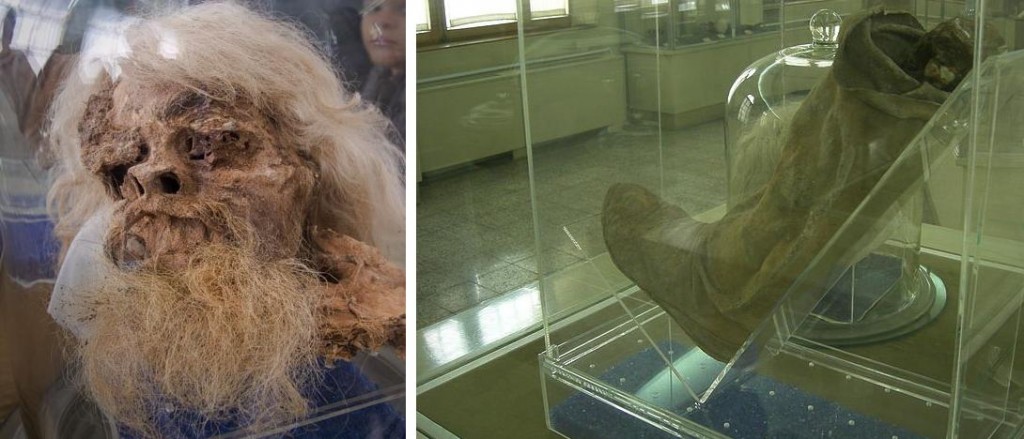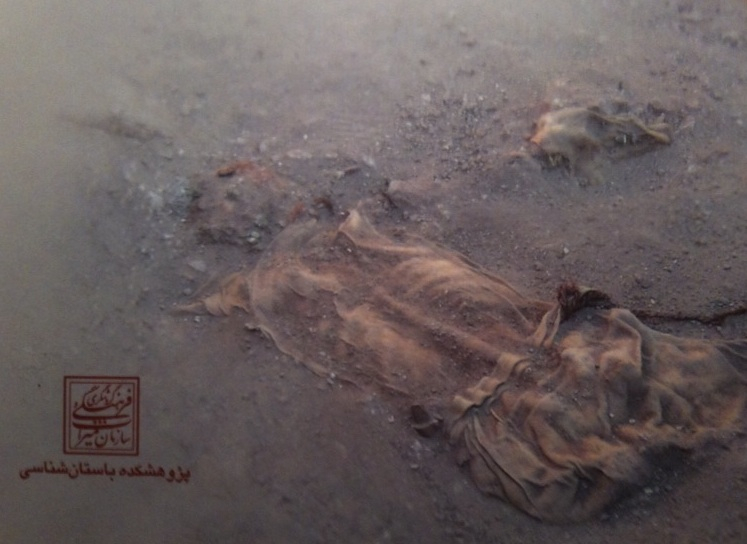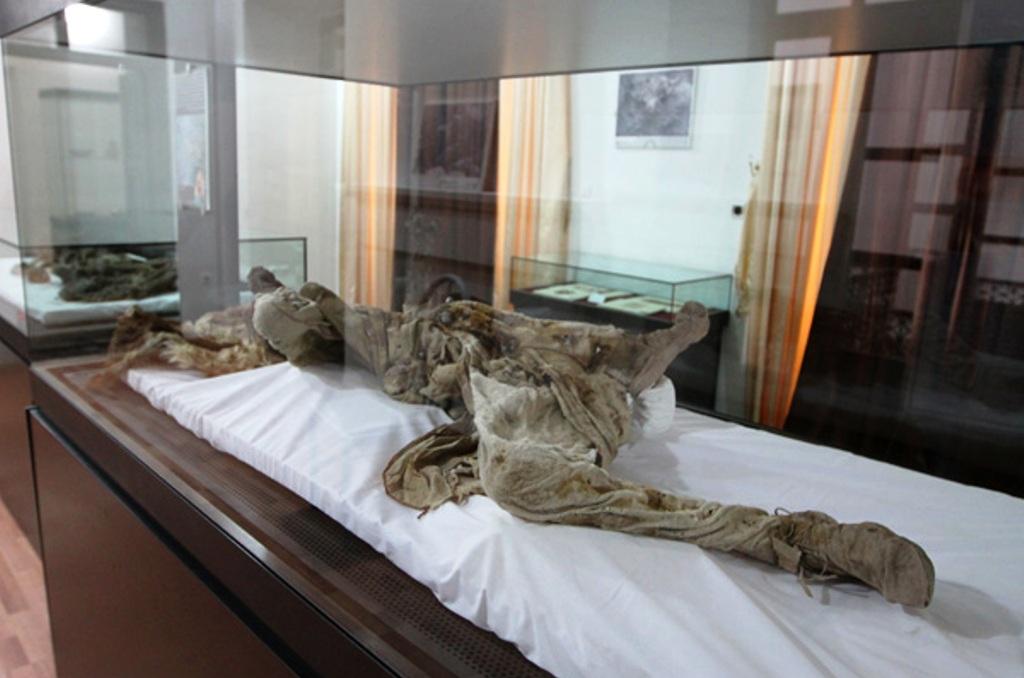Iranian miners working at the Chehr Abad salt mines (located west of the city of Zanjan in Iran’s northwest) made a startling discovery in the winter of 1993. They discovered a human body with long reddish hair, beard and a lower left leg still inside a boot. The body had been buried inside a tunnel which was roughly 45 metres long. Another five bodies were to be discovered in the ensuing years, including those of a woman and teenager.
There were other artefacts found with the body, notably three iron knives, a pair of woollen trousers, a silver needle, sling, parts of a leather rope, a grindstone, and a walnut.
Isotopic analyses have been conducted on five of the salt-preserved “mummies” to help identify their origins and determine the times they had lived.
The bodies have been dated to a vast time range between the 4th century BCE (circa Achaemenid era) and 4th century CE (Sassanian era). See the table below for details: [Click to Enlarge] Radiocarbon dates for the Chehr Abad bodies recovered to date; note the wide time range of the bodies. Clearly, the people buried in these mines were generations apart. There are also indications that these people hailed from different regions as well. (Source: University of Oxford). There are variations in the geographical origins of these bodies as well. Researchers from the Department of Environmental Sciences, Università Ca’ Foscari in Italy, have matched the osteological samples from various the Iranian sites and those from the salt “mummies” found in the mine. Video by Davood Akhavan on the Salt “Mummies” of Chehr Abad.See also video by the National Geographic News. The isotopic studies have led the Italian researchers to the following hypotheses: 1) Two of the “mummies” may possibly have hailed from the Tehran-Qazvin area, which is consistent with the salt mine region. 2) Two of the “mummies” were probably from Iran’s northeast regions or even modern-day Central Asia. 3) The fifth body appears to have come from further away, possibly from further east (possibly further into Central Asia towards China’s northwest or ancient Mongolia). [Click to Enlarge] One of the mummies (number 4) has been very well preserved; note the details of clothing and personal items and equipment. (Source: University of Oxford). According to a Tehran Times report, a number of the salt mummies are currently being housed in special showcases under controlled conditions at the Zolfaqari Museum of Zanjan. [Click to enlarge ] One of the Salt Mummies of Chehr Abad displayed in Zanjan’s Zolfaqari Museum (Picture source: Saghar Amir-Azimi of the Cultural Heritage News Agency of Iran). For further reading on this topic kindly consult: Ramaroli, V., J. Hamilton, P. Ditchfield, H. Fazeli, A. Aali, R.A.E. Coningham, and A.M. Pollard, The Chehr Abad ‘‘Salt Men’’ and the Isotopic Ecology of Humans in Ancient Iran. American Journal Of Physical Anthropology 143:343–354 (2010). See abstract.







